How to Make Cuban Coffee (Café Cubano) – Authentic Recipes and Brewing Tips
Cuban coffee, or Café Cubano, is more than just a drink—it’s a cultural tradition steeped in rich flavors and vibrant rituals. Known for its bold taste and signature frothy espuma, this iconic beverage has captured the hearts of coffee lovers worldwide.
Made using finely ground espresso, sugar, and a precise brewing method, it delivers a unique blend of sweetness and intensity that’s hard to resist.
Learning how to make Cuban coffee means embracing its key ingredients: dark roasted beans, a balanced dose of sugar, and the iconic shot of energy it provides.
Unlike American coffee, which can feel overly caffeinated, Café Cubano is enjoyed in small ounces throughout the day, serving as the perfect pick-me-up during breakfast, after dinner, or at gatherings.
With this recipe and tutorial, you can create the practically perfect cup of Cuban coffee in your own home, savoring the warmth and charm of this timeless tradition.
What is Cuban Coffee?
Cuban coffee, also called Café Cubano, is a rich and strong coffee that’s deeply tied to Cuban culture and tradition. This sweet espresso drink is made using dark roast coffee blended with sugar to create a bold yet balanced flavor.
The coffee is typically brewed using a moka pot or a stovetop coffee maker, which enhances its robust taste. The signature espumita, a layer of creamy foam, is created by whisking sugar with the first drops of espresso, giving the drink its unique texture and sweetness.

The charm of Cuban coffee lies in its simplicity and versatility. A cup of Café Cubano can be enjoyed on its own or served as a base for drinks like café con leche, where sweet espresso is mixed with steamed milk.
Whether shared among friends or sipped during a quiet moment, this cherished beverage remains a symbol of connection and warmth. Perfect for mornings or as an afternoon boost, its bold flavor and creamy sweetness make it a beloved choice for coffee enthusiasts everywhere.
A Little Window Into Cuban Coffee Culture
The essence of Cuban coffee culture lies in its ability to bring people together, creating a sense of culture and connection that is central to daily life. In Miami, this tradition thrives as locals gather at counters or in homes to enjoy a steaming cup of Café Cubano.
It’s more than just a drink—it’s a ritual that pairs perfectly with the flavors of pastelitos, masa real, and croquetas, turning every sip into a moment of shared joy.

From bustling Cuban restaurants to the familiar aisles of Publix grocery stores, where these beloved treats are easily found, the tradition of Cuban coffee lives on. Its bold, sweet flavor, combined with the warmth of family and community, is a reminder of its deep roots in Cuban culture.
Cafecito Day or Night
For many, Cuban coffee is a ritual that starts in the morning with a shot of rich espresso. Some enjoy it after lunch as the perfect drink to recharge for the afternoon. However, for those who are truly Cuban at heart, like my stepfather, coffee consumption isn’t limited to daylight hours.
He brews his cafetera several times a day, savoring each cup—even before heading to bed. The bold flavor and comforting aroma of Cuban coffee make it a beloved part of daily life, no matter the hour.

Every visit to Mami’s house includes my stepfather making coffee for my hubby and me, which has become a cherished tradition. My hubby adores Cuban coffee so much that he never goes on a vacation without packing our cafetera, Pilon café, and espresso cups.
On one memorable trip to St. Augustine, he forgot them and had to buy a replacement, showing just how essential this little cup of joy is to our travels.
Cuban Coffee Roast
The secret to Cuban coffee’s bold flavor lies in the special dark roast used to make it. This roast is deeper and richer than most, giving the coffee its signature intensity. The beans are roasted until they reach a nearly black color, resulting in a smoky aroma and a robust taste that’s perfect for creating the strong base of Café Cubano.

This dark roast is ideal for making espresso, as it balances its boldness with just the right amount of smoothness. It pairs perfectly with the sweet foam (espuma), making every cup of Cuban coffee a flavorful experience. When learning how to make Cuban coffee, starting with the right roast is key to achieving authentic results.
Cuban Coffee Brands
Choosing the right Cuban coffee brand can make all the difference in capturing the authentic flavor of Café Cubano. These brands have been trusted for decades for their dark roasts and bold flavors, making them perfect for traditional Cuban brewing methods. Some of the most popular options include:
- Bustelo – Known for its rich, full-bodied flavor and strong aroma.
- Pilón – Offers a smooth and bold taste, perfect for espresso lovers.
- La Llave – A classic Cuban favorite with a deep, intense roast.

Each of these brands delivers the signature taste that makes Cuban coffee so special. Their carefully crafted blends work beautifully with stovetop espresso makers or moka pots, ensuring an authentic experience every time.
Types of Cuban Coffee
Cuban coffee isn’t just one drink—it’s a collection of variations that reflect its rich culture and traditions. Each type has its own unique flavor and preparation style, making it a versatile choice for coffee enthusiasts.
Cafecito
This is the most common type of Cuban coffee and a staple in Cuban households. A cafecito is a strong, sweet espresso made by mixing the first drops of brewed coffee with sugar to create a caramel-like foam (espuma).
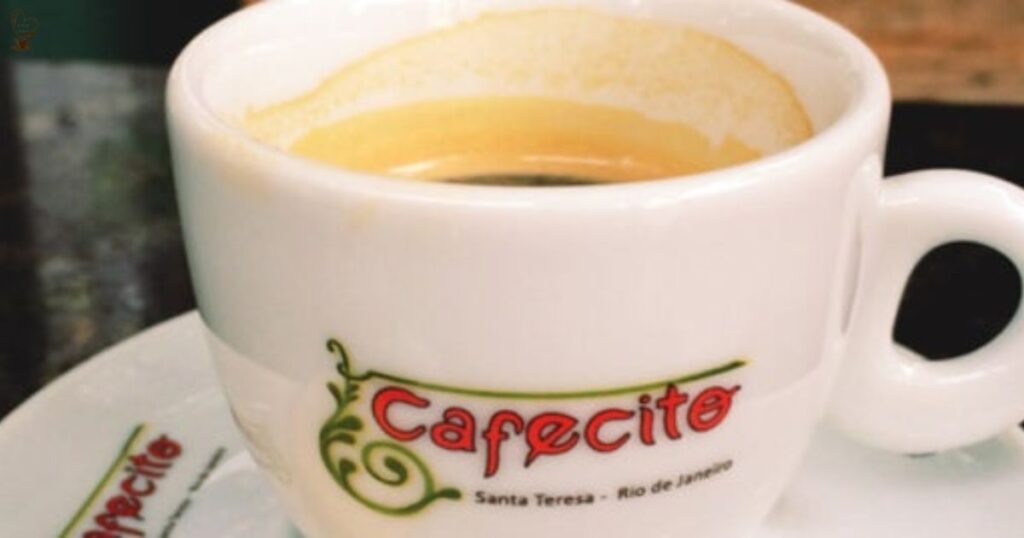
It’s served in small cups and sipped slowly to savor its bold and sweet flavor. It’s the perfect companion for a quick break or socializing with friends.
Cortadito
A cortadito is a smooth combination of espresso and steamed milk. The milk softens the intensity of the coffee, creating a drink that’s creamy yet still robust.

It’s often served in small portions and is ideal for those who enjoy a slightly lighter flavor while still experiencing the richness of Cuban coffee.
Café con Leche
This comforting option is made with equal parts of espresso and hot milk, creating a mild and creamy drink. Café con leche is a traditional choice for breakfast, often paired with Cuban bread or pastries.
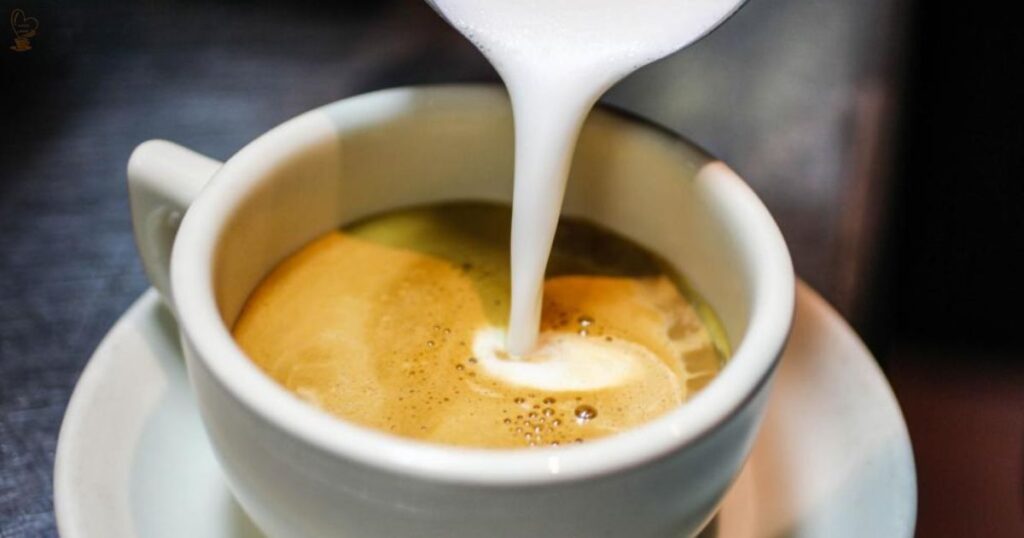
The combination of strong coffee and warm milk makes it a soothing and satisfying way to start the day.
Each type offers a unique experience, showcasing the rich and versatile flavors of Cuban coffee.
Cortadito vs Café con Leche
Both Cortadito and Café con Leche are beloved Cuban coffee drinks, but they cater to different tastes and occasions. A Cortadito is made with a shot of bold espresso and a small amount of steamed milk. It’s strong and creamy, offering a balanced flavor that’s perfect for a mid-day pick-me-up or a quick treat.
On the other hand, Café con Leche is a larger and milder drink. It combines equal parts of espresso and hot milk, creating a smooth, comforting beverage. This drink is often enjoyed during breakfast, paired with toast or pastries.
While both highlight the richness of Cuban coffee, the Cortadito leans towards boldness, while Café con Leche provides a gentler, more soothing experience.
Cortadito vs Colada
Both Cortadito and Colada are iconic Cuban coffee drinks, but they serve different purposes and experiences. A Cortadito is a small, creamy beverage made by blending strong espresso with steamed milk. Its smooth texture and rich taste make it a comforting choice, perfect for those who enjoy a milder coffee with a touch of sweetness.
A Colada, on the other hand, is a larger serving of pure Cuban espresso, typically poured into a large cup and shared among friends. It’s meant to be divided into small shots, known as tacitas, for group enjoyment.
While a Cortadito offers a personal and mellow experience, a Colada is bold, intense, and designed to bring people together. Both showcase the bold flavors of Cuban coffee in their own unique ways.
What Makes the Perfect Cup of Cuban Coffee
The perfect cup of Cuban coffee starts with high-quality, dark-roasted beans. These beans deliver the bold, smoky flavor that makes Café Cubano unique. Using a stovetop espresso maker, like a moka pot, ensures the coffee is brewed strong and full of aroma.
The first drops of espresso are crucial, as they’re whipped with sugar to create the signature espuma, a sweet and frothy topping.

The balance of strong espresso and creamy espuma defines the perfection of Cuban coffee. It’s served in small cups to preserve the intensity and sweetness in every sip. Attention to each step, from selecting the right beans to creating the perfect foam, transforms a simple recipe into a rich and authentic experience.
Cuban Coffee Espresso Maker
A Cuban coffee espresso maker is designed to create the rich and bold flavors essential to Café Cubano. These machines are crafted to extract the perfect shot of espresso, which forms the base for this iconic coffee. They use high pressure to brew finely ground, dark-roasted beans, ensuring the espresso is both strong and aromatic.
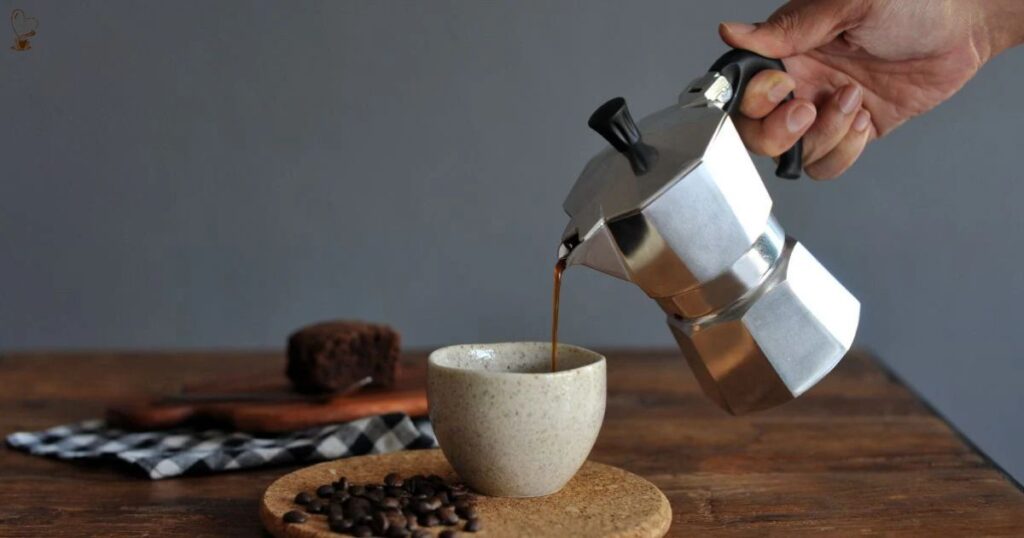
Modern espresso makers bring convenience and precision to the process, allowing you to recreate the authentic taste of Cuban coffee at home.
Many models include settings to control brew strength and temperature, making it easier to achieve the perfect flavor profile. With the right espresso maker, you can enjoy a true Cuban coffee experience.
How To Use A Moka Pot
Using a moka pot is a simple way to brew the strong, rich coffee that’s perfect for Cuban coffee. Start by filling the bottom chamber with water, making sure it doesn’t go above the safety valve.
Next, add finely ground coffee to the filter basket, leveling it off without packing it down. Assemble the pot tightly and place it on medium heat.
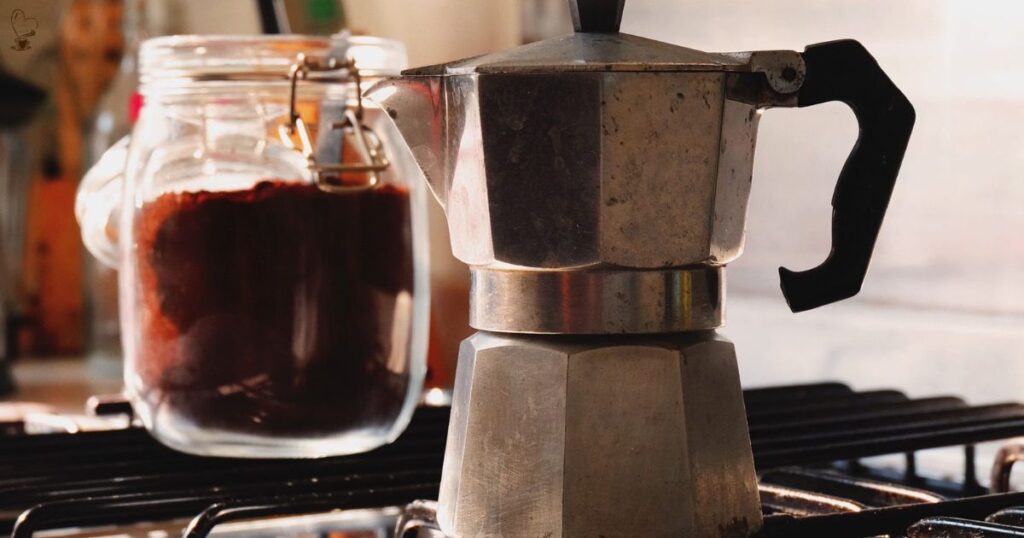
As the water heats, it will create pressure that pushes the water through the coffee grounds into the upper chamber. You’ll hear a bubbling sound when the brewing is complete.
Remove the pot from the heat and pour the espresso immediately. The result is a bold, aromatic coffee that serves as the foundation for an authentic Café Cubano.
Step-By-Step Instructions
Making Cuban coffee is an art that combines rich espresso with sweet, creamy foam. With just a few simple steps, you can recreate the authentic taste of Café Cubano at home. Follow these detailed instructions to master the process and enjoy a perfectly balanced cup.
1. Brew the Espresso
Start by preparing your espresso maker or moka pot. Fill the bottom chamber with water, ensuring it doesn’t exceed the safety valve. Add finely ground, dark-roasted coffee to the filter basket, leveling it off without pressing it down.
Assemble the pot securely and place it on medium heat. Allow the coffee to brew until the upper chamber is filled with rich, aromatic espresso. Set aside a few tablespoons of the first brewed coffee for the next step.
2. Make the Sugar Foam
In a small bowl, add 2-3 teaspoons of sugar. Take the reserved brewed coffee and pour it into the sugar. Whisk vigorously until the mixture becomes thick and frothy. This foam, known as espuma, is what gives Cuban coffee its signature sweetness and creamy texture.
3. Combine the Brewed Espresso with the Sugar Foam
Pour the freshly brewed espresso over the prepared espuma. Stir gently to combine the foam with the coffee, ensuring an even distribution of sweetness. Serve in small espresso cups for a bold and flavorful Cuban coffee experience.
Does it matter if you use granulated sugar or brown sugar?
The type of sugar you use can slightly change the flavor and texture of your Cuban coffee. Granulated sugar is the traditional choice and is perfect for creating the signature espuma.
Its fine texture dissolves easily, blending smoothly with the first drops of brewed espresso to form a light, frothy foam. This gives the coffee its classic sweet taste without altering the boldness of the espresso.
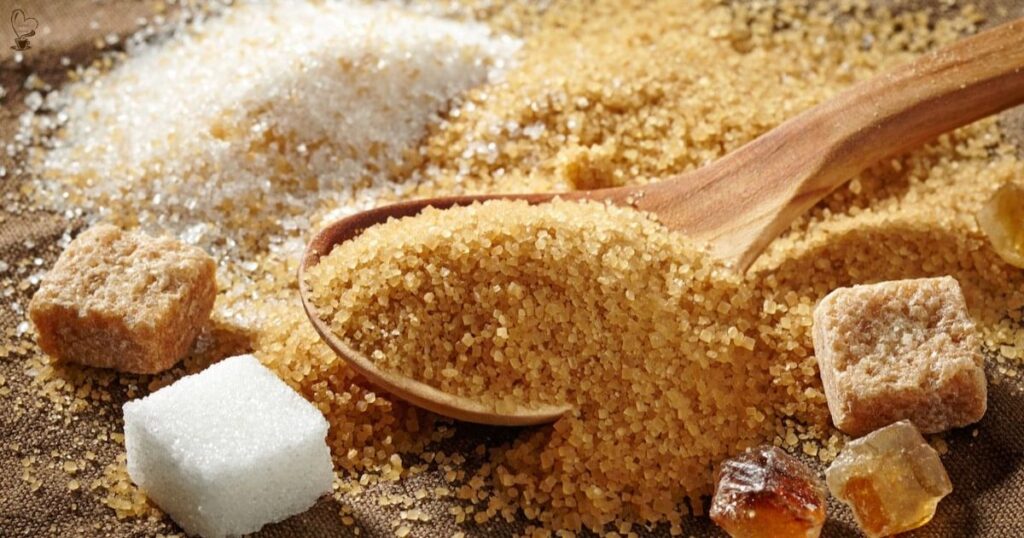
Brown sugar, on the other hand, adds a deeper, caramel-like flavor to the coffee. Its molasses content enhances the richness of the drink, giving it a unique twist.
While both sugars work well, granulated sugar is the go-to for an authentic Cuban coffee experience, while brown sugar offers a subtle variation for those who enjoy a richer sweetness.
What you’ll need to Make Cuban Coffee
To make authentic Cuban coffee, gather the following ingredients and tools:
- Stovetop espresso maker – For brewing strong, rich coffee.
- Cuban-style coffee – Finely ground, dark-roasted coffee for bold flavor.
- Sugar – To create the signature frothy espuma.
- Water – Essential for brewing the espresso.
- Glass or metal pitcher – For mixing the coffee and sugar foam.
- Demitasse cups – Perfect for serving small, concentrated portions
These simple ingredients and tools will help you craft a traditional Café Cubano with ease.
How to Make Cuban Coffee 2 Methods
There are two common ways to prepare Cuban coffee: creating sugar foam (espuma) or brewing directly with sugar in a moka pot.

Both methods produce the bold, sweet flavor that defines Café Cubano. Here’s a step-by-step Cuban coffee recipe for each method:
Method 1: Making Cuban Coffee with Sugar Foam
- Choose dark-roasted coffee beans: Pick a high-quality, dark roast. Grind the coffee finely to ensure it brews evenly in your moka pot. The strength of the beans is essential for creating the traditional flavor in this Cuban coffee recipe.
- Fill a moka pot with coffee and water: Add fresh water to the bottom chamber of your moka pot, stopping just below the safety valve. Fill the filter basket with ground coffee, leveling it without pressing down. This allows the water to flow evenly through the coffee.
- Heat over medium-low: Place the assembled moka pot on medium-low heat. This slower brewing process prevents overheating, ensuring a smoother and less bitter brew. Watch for the coffee to bubble into the upper chamber.
- Measure sugar into a deep cup: Use 2–3 teaspoons of white granulated sugar, depending on how sweet you prefer your coffee. A deep cup or bowl helps when whisking the sugar later.
- Pour the first drops of coffee onto your sugar: Once the brewing starts, carefully collect the first few drops of espresso. These are the strongest and most flavorful parts of the brew, perfect for creating a thick foam.
- Whip the sugar and coffee together vigorously: Combine the coffee and sugar with a spoon, whipping them until the mixture turns light and frothy. This espuma is the key to the sweet, creamy texture of Cuban coffee.
- Pour the rest of the coffee over your mixture: Once the brewing finishes, pour the remaining coffee into the bowl with the whipped sugar. Stir gently to blend the foam evenly throughout the coffee.
- Serve as desired: Pour the final mix into small demitasse cups. These small servings pack a strong, sweet flavor in every sip.
Method 2: Brewing Directly in a Moka Pot
- Mix coffee grounds with sugar: Combine finely ground coffee with 2–3 teaspoons of sugar in a bowl. Mix thoroughly to coat the coffee grounds evenly with sugar. This method infuses sweetness directly into the coffee during brewing.
- Place loosely in the moka pot basket: Add the sugar-coated coffee grounds to the moka pot’s filter basket. Avoid pressing the coffee down, as this could block water flow and affect the brewing process.
- Pour in water: Fill the bottom chamber of the moka pot with fresh water, ensuring it doesn’t rise above the safety valve. This step is crucial for maintaining proper pressure during brewing.
- Brew as usual: Assemble the moka pot securely and place it on medium-low heat. Allow the coffee to brew slowly, letting the sweetened coffee collect in the upper chamber. This method skips the need for whipping but still delivers a sweet and flavorful coffee.
- Serve directly from the pot: Once the coffee is brewed, pour it into small demitasse cups and enjoy a simpler but equally satisfying version of Cuban coffee.
Conclusion
Mastering how to make Cuban coffee brings a piece of Cuban culture to your kitchen. This rich, sweet espresso is not just a drink but a celebration of flavor and tradition. The key lies in creating the perfect espuma—where sugar and espresso come together in harmony. From selecting freshly ground espresso to achieving the right brewing pressure, every step matters to deliver the bold taste Cuban coffee is known for.
Enjoy the experience of brewing Café Cubano as much as sipping it. Share the joy with friends and family, pairing it with buttery pastries or a conversation-filled afternoon. Experiment with brewing techniques to make each cup uniquely yours, all while staying true to the authentic Cuban tradition.
FAQs
How is Cuban Coffee Made?
Cuban coffee is typically brewed using a Moka pot. Sugar is added to the coffee grounds or whipped with the first drops of brewed coffee to create a frothy espuma. This strong, sweet espresso-like coffee is served in small cups.
How to make Cuban Coffee without a Machine?
Cuban coffee can be made without a machine by using a Moka pot or a simple stovetop method. Brew strong coffee and whip the first drops with sugar to create espuma. Mix it with the rest of the coffee and serve in small cups.
Is Cuban Coffee Just Espresso?
Cuban coffee is essentially espresso but with a unique twist. It’s sweetened with whipped sugar (espuma) made from the first drops of brewed coffee. This gives it a distinctively rich and sweet flavor.
How Many Spoons of Sugar for Cuban Coffee?
Cuban coffee is sweet because sugar is combined with finely ground strong dark coffee before brewing. This process infuses the coffee with sweetness as it brews. Additionally, whipped sugar (espuma) enhances its rich, sweet flavor.
Why is Cuban Coffee so Strong?
Cuban coffee is strong due to its finely ground, dark roast beans that are high in caffeine. It’s brewed as a concentrated espresso, enhancing its bold flavor. The brewing process also intensifies its strength and richness.
How to Make Cuban Coffee Foam?
Cuban coffee is strong because it’s brewed as a concentrated espresso using dark, finely ground coffee. The strength is complemented by whisking the first drops of espresso with sugar to create a caramel-colored foam (espuma). This enhances both its bold flavor and rich texture.







